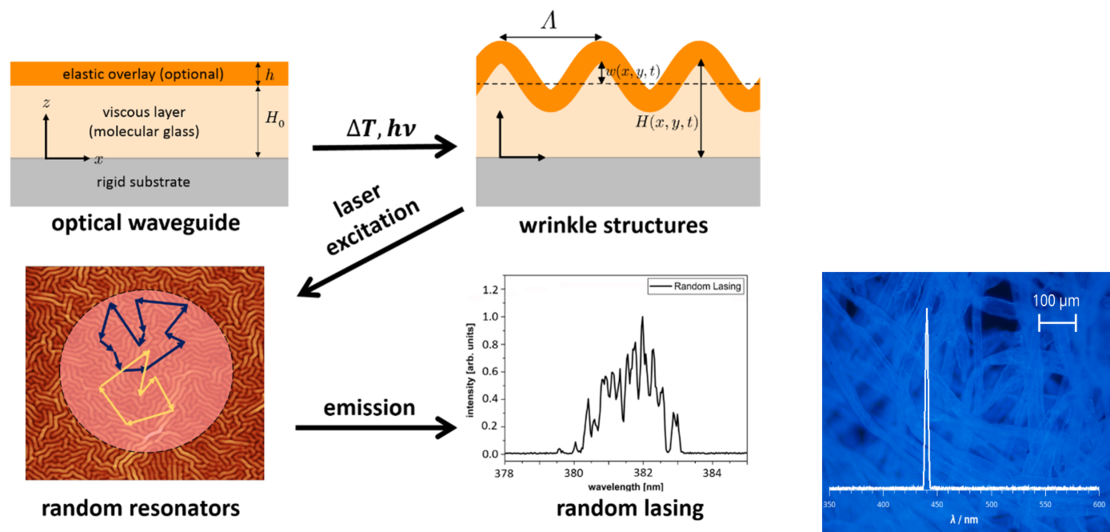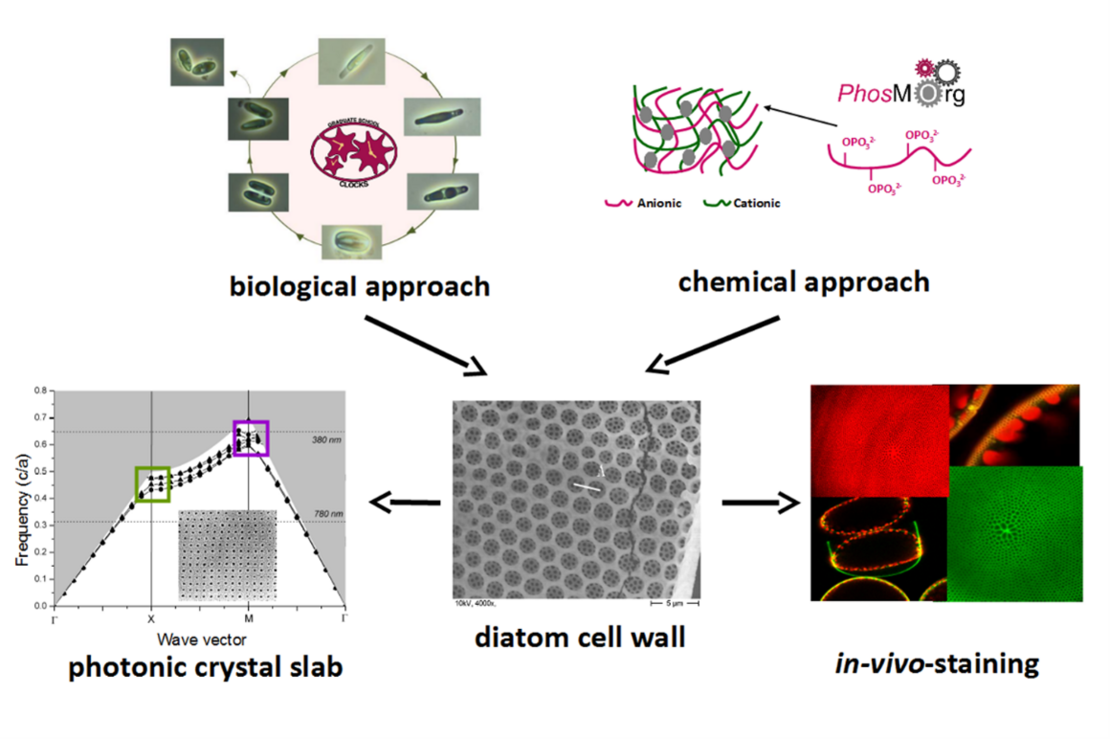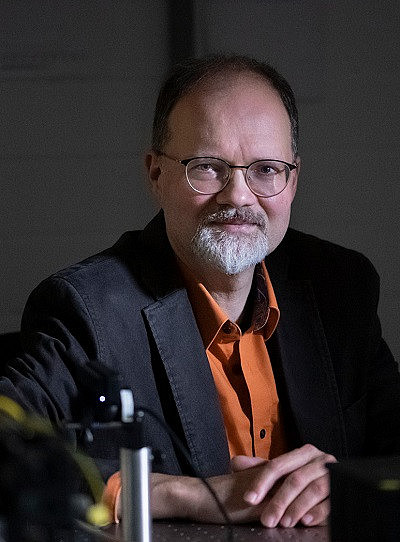Macromolecular Chemistry and Molecular Materials
The research interests of apl. Prof. Dr. Thomas Fuhrmann-Lieker (Macromolecular Chemistry and Molecular Materials) comprise self-organization phenomena and photonics of soft matter. Recent projects that are highlighted here focus on random lasing and photonic functionalization in microalgae.
Lasing in disordered materials (Focus Topic Photonics)
Based on our experience on Amplified Spontaneous Emission and Distributed Feedback Lasing in organic glasses we extended the range of resonators to disordered systems. Random lasing with narrow mode bandwidths of <0.1 nm have been achieved in wrinkled systems in which the emissive layer is placed between a rigid substrate and a cladding. When heated to the glass transition of the central layer, the resulting wrinkles provide the necessary feedback for random laser modes (Fig 1, left) when pumped with a nitrogen laser. Stimulated emission was also achieved in plain copy paper or calligraphy paper stained with fluorescent brightening agents (Fig. 1, right). Dyes applied by commercial highlighter pens shift the sharp emission line to various colors.

Highlight publication: N. Hoinka, T. Fuhrmann-Lieker, "Amplified Spontaneous Emission in Paper", Scientific Reports 9, 1862 (2019)
Selforganization of biominerals in space and time (Focus Topic 3D-Nanostructures)
Having worked on the photonic properties of diatoms (Bacillariophyta) for a long time, our focus is now directed to the spatiotemporal processes that govern the reproduction of diatoms. As part of the graduate school on „Biological clocks“ we investigate the inheritance of the disordered pattern in the generation cycle; as part of the research group PhosMORg we investigate the role of highly phosphorylated biopolymers in pattern formation (Fig. 2). As tool for detecting ageing in synchronized algae cultures, in-vivo-staining is applied. By simultaneous staining with two different dyes, Förster-type energy transfer has been demonstrated, which allows the calculation of mean staining density in the silica biomineral.

Highlight publication: M. Grimann, T. Fuhrmann-Lieker, "Simultaneous uptake of a Förster transfer dye pair by diatoms: Application in determination of staining density", J. Photochem. Photobiol. B: Biol. 163, 105 (2016)
apl. Prof. Dr. Thomas Fuhrmann-Lieker
full member

- Location
- Universität Kassel
Fachbereich 10 - Naturwissenschaften & Mathematik
Institut für Biologie
Heinrich-Plett-Straße 40
34132 Kassel
- Room
- IBC 3111
